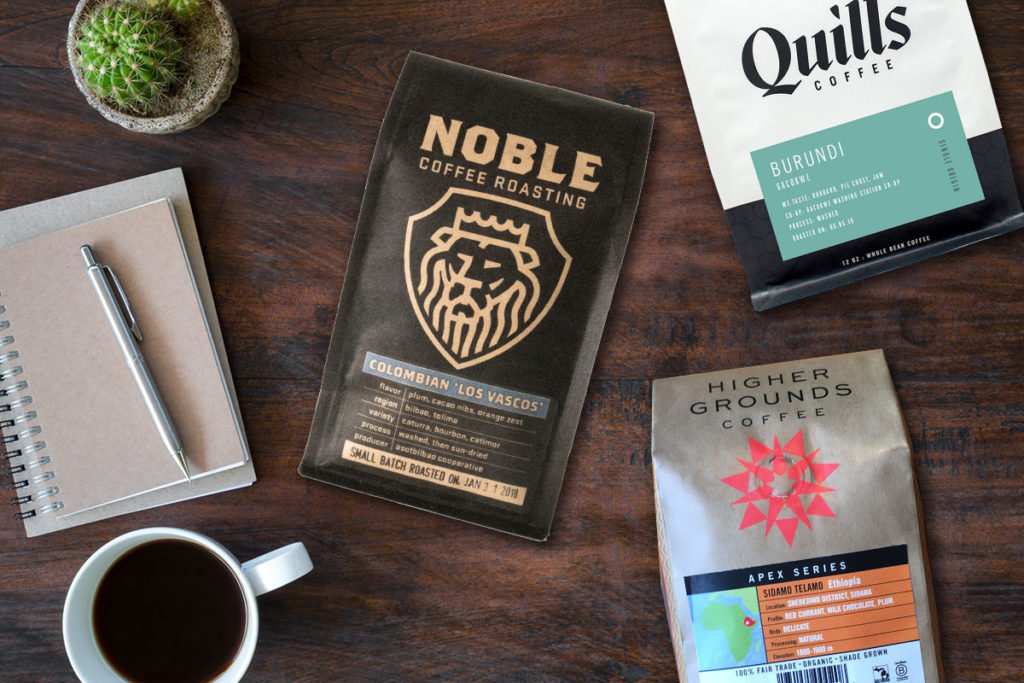There are a lot of beautiful, well-marketed coffee bags out there. When you are trying to choose the highest-quality coffee, though, the prettiest bag is not always—and in fact, rarely is—your best option. Below is a list of relevant things to look for on a coffee bag before you purchase to ensure you select good-quality beans to bring home.
Roast Date
The bag should have a “roasted on” date (not a “best before” date). Coffee is at its best within two to four weeks of roasting. Many commercial coffee companies will put a “best before” date that can be anywhere from 12 to 24 months after roasting. The only way to ensure the coffee you are purchasing is fresh is with a roast/package date on the bag.Country & region
The bag should include the country and region the coffee was grown—at a minimum. Where a coffee was grown can immediately give you indications of the type of flavors you should expect.Farm or producer
Specialty coffee usually takes it one step further and includes not only the country/region, but also the small farm, cooperative, estate, washing station, and even the name of the farm owner/manager. While including the farm/producer on the bag doesn’t guarantee the quality of the coffee, coffee that is traceable to a single location is much more likely to be of high quality and handled properly throughout the process. It also is more likely to be fairly and/or directly traded.Elevation
The bag should include the elevation at which the coffee was grown. Many times, the elevation will be in meters above sea level (MASL). In general, higher-quality beans are grown at higher elevations—though there are exceptions to this rule. The Coffee Research Institute recommends the best elevation to grow coffee is between 550 and 1,100 MASL in subtropical climates. In places closer to the equator, elevation should be between 1,000 and 2,000 MASL1. The reason higher elevations are better for coffee production is that the coffee cherries ripen more slowly, allowing the beans to have more time to store nutrients (in the form of sugars), which helps the development of flavor.Elevation Likely Flavors Very High (1,524+ MASL) Fruity/Floral High (1,219+ MASL) Citrusy/Chocolaty Medium (914+ MASL) Nutty Low (762+ MASL) Earthy Very Low (609+ MASL) Muddy Source: Easto, Jessica, and Andreas Willhoff. Craft Coffee: a Manual: Brewing a Better Cup at Home. Surrey Books, an Agate Imprint, 2017. p 169.
Processing
The bag should include how the coffee was processed. Processing information on the bag not only can give you good clues about the characteristics a coffee will have, but it also increases the likelihood that care was given throughout the process, from harvesting to roasting. The most common processing options included washed/wet process, natural/dry process, and pulped natural/honey process.Whole bean or ground
Coffee loses its freshness as soon as it is ground, so any coffee you purchase should be whole bean. Don’t grind it until you are ready to brew. We discuss the importance of buying whole bean coffee more in The Basics of Making Great Coffee.One-way valve
This isn’t information on the bag, but rather a feature of the bag, and it is essential for fresh coffee. Fresh coffee gives off CO2 as a by-product of the roasting process. A one-way valve allows CO2 to leave the bag without oxygen coming in. If oxygen is allowed in the bag, it can cause complex aromas to be lost.
In addition to the items above, you’ll often find some additional information on high-quality coffee bags. These aren’t required, but they are additional indicators of quality coffee.
- Flavor note
A lot of flavor notes are marketing. “Lemon drop, hibiscus” or “Plum, milk chocolate, orange zest” likely are not exact flavors you’ll experience when you enjoy the coffee at home. That said, flavor notes can give you an idea of what to expect in a roast—just don’t get carried away expecting to taste a chocolate bar in your coffee. - Blend vs. single origin
Some coffee roasters refuse to roast with blends because they are not as “pure” as single origin coffees. While commodity coffee is almost exclusively blends and as such can give them a bad name, there are some really nice blends available from high-quality roasters. If you aren’t familiar with a roaster or a coffee, you’re more likely to get top-quality coffee with single-origin options. - Certifications
Coffee certifications include USDA Organic, Fair Trade, Rainforest Alliance, and more. While certifications don’t necessarily mean anything, they can imply not only that the coffee was sustainably produced, but also that it is a quality product that has been cared for throughout the process. - Roast level
Roast levels range from light to extreme dark. While there isn’t much standardization when it comes to roast level and there isn’t necessarily a good or bad roast level (but instead, personal preference), noticing the roast of the coffee can give you clues about the characteristics you can expect from the coffee.
While shopping for the best coffee can be overwhelming, using the above tips will make sure you purchase fresh, high-quality coffee every time.
